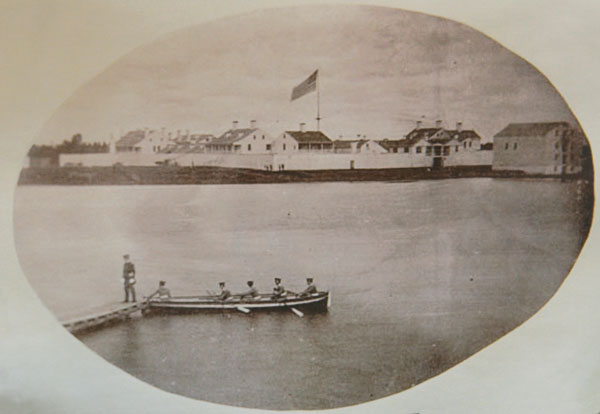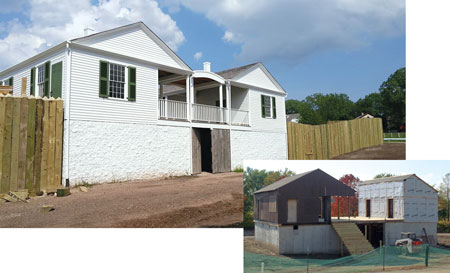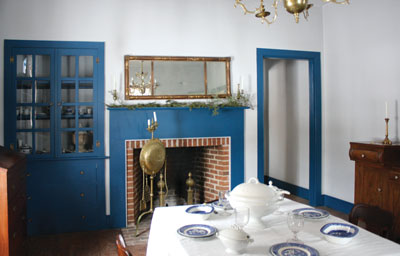Building America: Celebrating Fort Howard’s 200th Anniversary
It’s not every day a significant historical milestone takes place in one’s own backyard. As the date of Aug. 7 draws near, it’s important to reflect on the impact the formation of Fort Howard had not only in shaping the area of Green Bay, but also that of Wisconsin and the United States as they exist today. This piece of military and social history will be celebrated over the next few months by the city of Green Bay, local museums and historical societies who will host bicentennial exhibits, replicating fort weddings and, even staging an 18th century play the soldiers used to perform.
![MAP: Green Bay and Fort Howard, Brown Co., Wisconsin 1867. Created / Published by Chicago Lithographing Co. [1867] Library of Congress Geography and Map Division Washington, D.C. 20540-4650](https://foxcitiesmagazine.com/wp-content/uploads/2016/05/056-HISTORY-Fort-Howard-map.jpg)
MAP: Green Bay and Fort Howard, Brown Co., Wisconsin 1867. Created / Published by Chicago Lithographing Co. [1867]
Library of Congress Geography and Map Division Washington, D.C. 20540-4650
In its 200 years, the fort offered protection, regulated trade for what would become the city of Green Bay, facilitated settlement in the Midwest, became a social hub for the area and even served a stint as a railroad station.
According to Timothy Brumm, a middle school history teacher and historical consultant to Heritage Hill State Historical Park in Green Bay, the fort also had numerous brushes with fame in its early days.
Maj. Zachary Taylor, who later became America’s 12th president, arrived as commander of the fort in 1817. The fort had been built hastily with green wood by the 3rd Infantry Regiment of the U.S. Army just the year before. It was surrounded by nothing but wilderness and was in poor shape.
Taylor, like many of his contemporaries, gladly left after only 22 months of roughing it.
In the 1830s, Mary Ellen Marcy, the daughter of a Fort Howard soldier, was born at the fort. She grew up to marry George B. McClellan, commander of the Union Army and Abraham Lincoln’s opponent in the 1864 presidential race.
“If George McClellan would have won, we could’ve said that the first lady was born in Green Bay,” says Brumm. The fort also produced a nominee for surgeon general in the 1830s. Though, he came in second place for the position.
Although Fort Howard has not reached the same level of fame as Zachary Taylor, and never quite produced a first lady or surgeon general, there is no denying its subtle yet significant influence in Wisconsin and the United States as they exist today.
Before the Fort
According to Christine Dunbar, executive director of the Brown County Historical Society, it took a long time for the United States to become interested in its Midwest territory.
“In 1787, the Northwest Territory was created,” says Dunbar. “That land was given to the United States by Britain in the Treaty of Paris.”
However, from 1787 until 1816, the Northwest Territory — which included the future states of Ohio, Indiana, Illinois, Michigan and Wisconsin — was mostly settled and controlled by French fur traders who were not subject to American law.
Mary Jane Herber, historian and genealogist at the Brown County Library, explains that for 50 years before the fort’s creation, “the French had been interacting and moving in and out of this area in terms of fur trading and intermarrying with native populations to some degree,” creating their own unique culture.
Growing Pains
The United States realized the strategic importance of establishing a fort along the Fox River only after fighting against the British in the War of 1812. Not only would a fort protect the territories from possible British invasion, but it also would allow America to control trade in the territories.
“There were some growing pains in terms of the interaction between the culture of the French Canadians — and that aspect of life — and the culture of the military,” says Herber.

Photograph of Fort Howard during occupancy, dating early to mid 19th century.
Source: Heritage Hill State Historical Park display.
This was especially true “between 1816 and 1818 when it was military-based in terms of law versus the civil government” of Brown County, she adds, as traders in the area resented the trade regulation imposed upon them by what was viewed locally as an occupying force.
Brumm explains that most of the inhabitants of what would later become Wisconsin had been pro-British during the War of 1812, forming their own militias and taking up arms against the United States.
Nevertheless, the soldiers of Fort Howard were often called upon to resolve land disputes between settlers and various tribes. Soldiers were stuck between a rock and a hard place, often siding with tribes against settlers who took land illegally, but also protecting settlers from indigenous aggression.
Dunbar reveals that opinions of the fort changed for the better by the 1830s due to the peace and order soldiers were able to enforce in the area, explaining that increase in migration began at that time.
Herber also points out the importance of migration from the Mid-Atlantic and Northeastern states. “You get people from Clinton County, Plattsburg, that whole county of New York State,” as well as people from as far north as Vermont, that were able to travel further inland via the secured waterways, she notes.
The social and economic life of Green Bay benefitted tremendously as soldiers stayed longer and brought their families. These new settlers opened the way for expansion into the Midwest as a whole.
The fort itself soon became what Brumm describes as a “social mecca,” hosting balls and soirées, forming a thespian society and even providing a library for the community.
Decline and Resurrection
Unfortunately, in 1853 the U.S. believed that Fort Howard was no longer strategically relevant and was decommissioned. By 1868, its buildings were sold to the Chicago and North Western Transportation Company.

Finding the Guard House: Once a residence on Green Bay’s west side, the converted guard house was set to be condemned and torn down if it hadn’t been acquired by Heritage Hill in 2009. The house was later moved to the park grounds.
The railroad company destroyed or moved many of the fort’s original buildings and repurposed the rest for its own use. Ultimately 21 of the fort’s 25 buildings fell into disrepair, and Fort Howard was all but forgotten until the early 1910s.
It was then that local historian Debbie Martin, who was interested in preserving Green Bay’s history, began to work diligently to save the old fort’s hospital.
Over time, Fort Howard’s kitchen was saved as well. The hospital and kitchen were moved several times before landing at Heritage Hill in the 1970s. Replicas of Fort Howard’s officer’s quarters and school were built in the 1980s and also reside at Heritage Hill.
Even more preservation efforts have taken place recently. The guard house, which was orginally the entrance to Fort Howard, underwent extensive restoration between 2009 and 2013.
“We pretty much identified when we had it here onsite what was Fort Howard and what were later additions to the building or alterations,” says Nick Backhaus, the restoration manager at Heritage Hill. Backhaus and his team were able to restore Guard House to its original state using other Fort Howard buildings as a model.
The Legacy Lives On
According to Backhaus, the 3rd Infantry Regiment that built the fort is still active today. Now known as “Escort to the President,” the regiment is charged with conducting memorial affairs honoring fallen soldiers.
Heritage Hill is looking into the possibility of hosting the 3rd Regiment as part of its 200th Anniversary Celebration in August.
Dunbar believes that without Fort Howard, Green Bay would have taken much longer to develop as a city. Fort Howard made Green Bay “a place where people felt safe,” she says.
Herber adds that Fort Howard “shows the development and the establishment of the United States in this area. … The initial establishment of that fort then allowed stability there in terms of the military. That then allowed civilians to start to move into the area and become settlers.”
Brumm also believes it is important to remember the fort’s role in facilitating western expansion. “We’re part of history right here. Green Bay is right in the midst. I mean, you can talk us up with Philadelphia or Boston. American history has happened here,” he states.
—FC












Leave a Comment